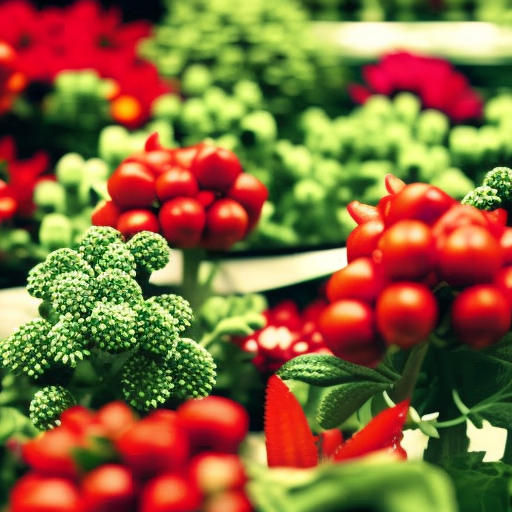Horticulture: An Overview
Horticulture is the science and art of cultivating plants for food, medicinal purposes, and aesthetic appeal. It encompasses a wide range of activities, including plant propagation, cultivation, breeding, and management. Horticulturists play a vital role in improving crop yields, developing new plant varieties, and creating beautiful landscapes. This summary provides an overview of the key aspects of horticulture.
Branches of Horticulture
Horticulture can be divided into several branches, each focusing on different aspects of plant cultivation. These branches include:
1. Pomology: Pomology is the branch of horticulture that deals with the cultivation of fruit crops. Pomologists study various aspects of fruit production, including plant physiology, breeding, pest management, and post-harvest handling.
2. Olericulture: Olericulture focuses on the cultivation of vegetable crops. Olericulturists work on improving the quality, yield, and nutritional value of vegetables. They also study the best practices for pest control and disease management in vegetable production.
3. Floriculture: Floriculture involves the cultivation of flowering and ornamental plants. Floriculturists work on developing new varieties of flowers, improving flower quality, and extending the vase life of cut flowers. They also study the best techniques for greenhouse production and floral design.
4. Landscape Horticulture: Landscape horticulture deals with the design, installation, and maintenance of landscapes. Landscape horticulturists work on creating aesthetically pleasing outdoor spaces, selecting appropriate plants for specific environments, and managing landscape pests and diseases.
5. Arboriculture: Arboriculture focuses on the cultivation and management of trees. Arborists study tree biology, pruning techniques, tree planting, and tree health care. They also play a crucial role in urban forestry and tree preservation.
Importance of Horticulture
Horticulture plays a significant role in various aspects of human life:
1. Food Production: Horticulture is essential for ensuring food security. By improving crop yields and developing disease-resistant varieties, horticulturists contribute to increasing food production and reducing hunger.
2. Medicinal Plants: Many medicinal plants are cultivated through horticulture. Horticulturists work on growing medicinal plants with high concentrations of active compounds, ensuring a sustainable supply of raw materials for the pharmaceutical industry.
3. Environmental Benefits: Horticulture helps in environmental conservation by promoting the use of plants for erosion control, air purification, and water management. Green spaces created through horticulture also provide habitats for wildlife and contribute to biodiversity conservation.
4. Aesthetic Appeal: Horticulture enhances the beauty of our surroundings. From public parks to private gardens, horticulturists create visually pleasing landscapes that improve the quality of life and provide recreational spaces for communities.
Challenges in Horticulture
Despite its importance, horticulture faces several challenges:
1. Pest and Disease Management: Plant pests and diseases can cause significant damage to horticultural crops. Effective pest management strategies, including integrated pest management (IPM) approaches, are crucial to minimize yield losses.
2. Climate Change: Climate change poses a threat to horticulture. Rising temperatures, changing rainfall patterns, and extreme weather events can impact crop productivity and increase the prevalence of pests and diseases.
3. Water Management: Water scarcity is a major concern in horticulture. Efficient irrigation techniques, water conservation practices, and the development of drought-tolerant plant varieties are essential for sustainable water management in horticultural systems.
4. Market Demand: Meeting the changing market demands for diverse and high-quality horticultural products requires continuous innovation and adaptation. Horticulturists need to stay updated with consumer preferences and market trends.
The Future of Horticulture
The future of horticulture looks promising, with advancements in technology and research. Some key areas of development include:
1. Biotechnology: Biotechnology offers opportunities for developing improved plant varieties with enhanced traits, such as disease resistance, improved nutritional content, and increased yield potential.
2. Precision Agriculture: Precision agriculture techniques, such as remote sensing, drones, and sensor technologies, can help horticulturists monitor crop health, optimize resource use, and make informed decisions for better crop management.
3. Sustainable Practices: The adoption of sustainable practices, such as organic farming, agroecology, and regenerative agriculture, is gaining momentum in horticulture. These practices focus on minimizing environmental impacts and promoting biodiversity.
In conclusion, horticulture is a diverse and vital field that encompasses various branches and plays a significant role in food production, environmental conservation, and aesthetic enhancement. Despite the challenges it faces, horticulture continues to evolve and innovate, driven by advancements in technology and research.












